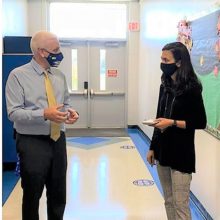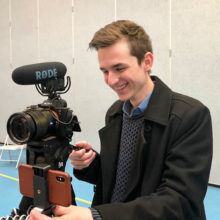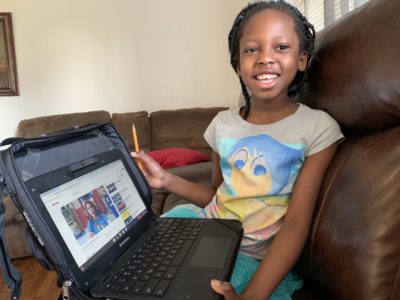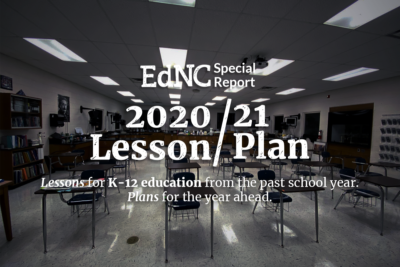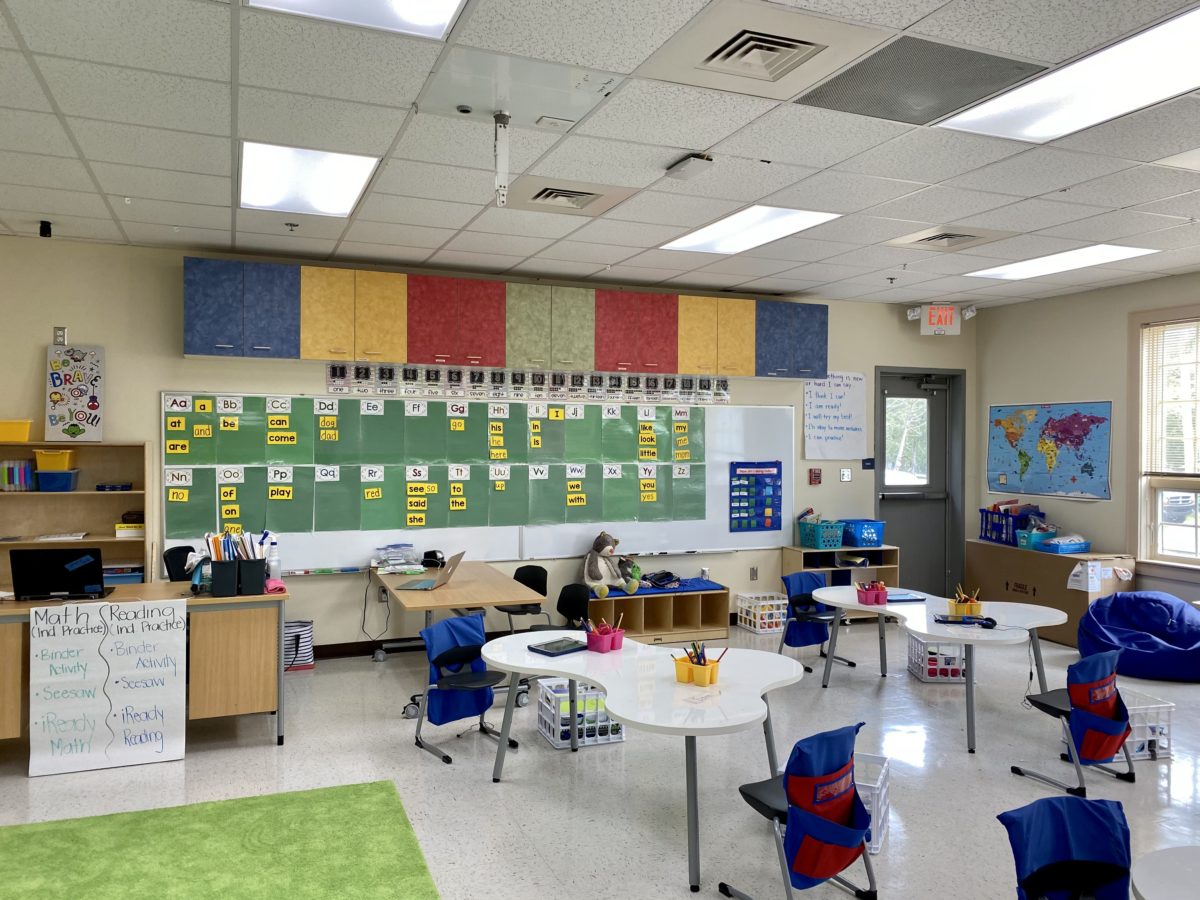
|
|
One morning in early April, a package from Starlink landed on Nancy Leach’s front porch. Leach lives on Ocracoke Island, a 16-mile-long strip of land accessible only by boat and separated from mainland Hyde County by the Pamlico Sound. She works as the director of student support services for Hyde County Schools.
Leach texted a photo of the package to Steve Basnight, superintendent of Hyde County Schools, and Randal Mathews, Hyde County commissioner for Ocracoke. “I said, ‘I can’t wait for this evening, we’re going to set it up,’” Leach said, recalling her excitement.
Later on, she received a text back: It was a photo of Mathews on her porch, installing the new Starlink equipment for her. Basnight soon joined him. By the time she got home from work that evening, the new satellite internet system was set up.
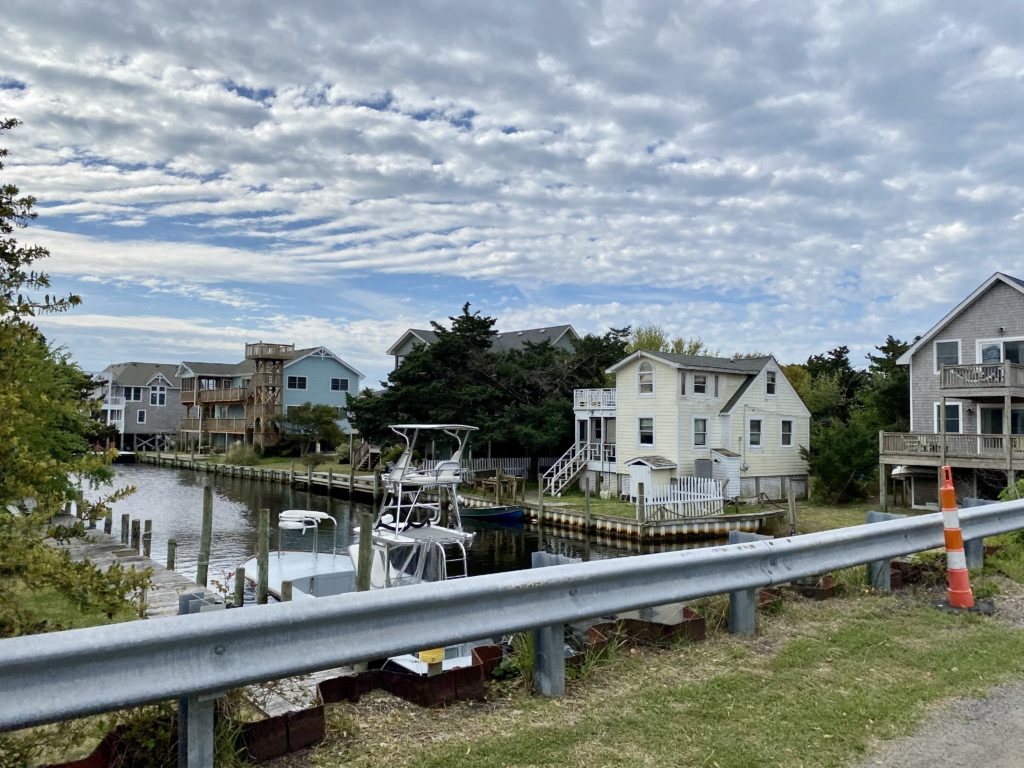
When remote learning first began, Leach and her daughter Essie, a student at the island’s K-12 Ocracoke School, were both working and studying from home. Trying to simultaneously join Zoom meetings was difficult with their previous internet speeds. Now, with Starlink installed, Leach said streaming multiple meetings at once is much more feasible, allowing her to join virtual school board meetings while Essie holds Zoom hangouts with her friends.
“It’s such a relief, and knowing if we have to go back to remote learning at any point, which I hope doesn’t happen, but we’ll be prepared this time,” said Leach.
Hyde County Schools is the smallest school district in the state, with only three schools and 513 students. The county, which spans both the mainland and Ocracoke Island, is the second-smallest in the state by population. And according to 2019 data compiled by the state’s Broadband Infrastructure office, roughly 37% of people in Hyde County do not have internet access. In nearby Dare County, that figure is only about 7%.
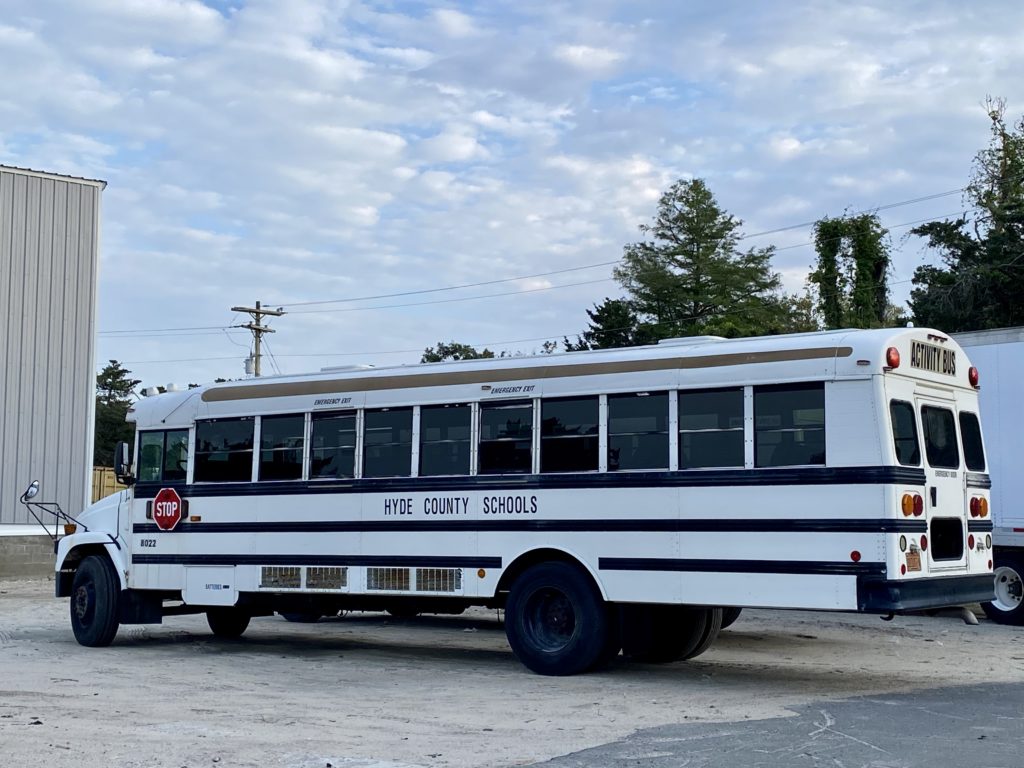
Even before the pandemic, Hyde County Schools was no stranger to remote learning days and lost instructional time. Whether it’s the threat of a hurricane or a shift in winds that causes the tides to rise, “weather dictates what we do,” said Basnight. In 2019, Ocracoke School missed 22 school days due to damage from Hurricane Dorian.
But even that many days away from the school building didn’t compare to what the COVID-19 pandemic brought on. During a school year marked by remote learning, the lack of broadband internet access in Hyde County made it difficult for students, teachers, and administrators to engage in everything from live virtual instruction to remote school board meetings.
“I know what all the problems are,” said Basnight of the county’s lack of broadband. “Don’t sit down in a room and tell me what all the problems are — I already know that. What are the solutions? What are we going to do about the problem?”
Now, after months of work on the part of both the school district and numerous partner organizations, two new solutions are being tested to connect Hyde County’s students and teachers with reliable broadband.
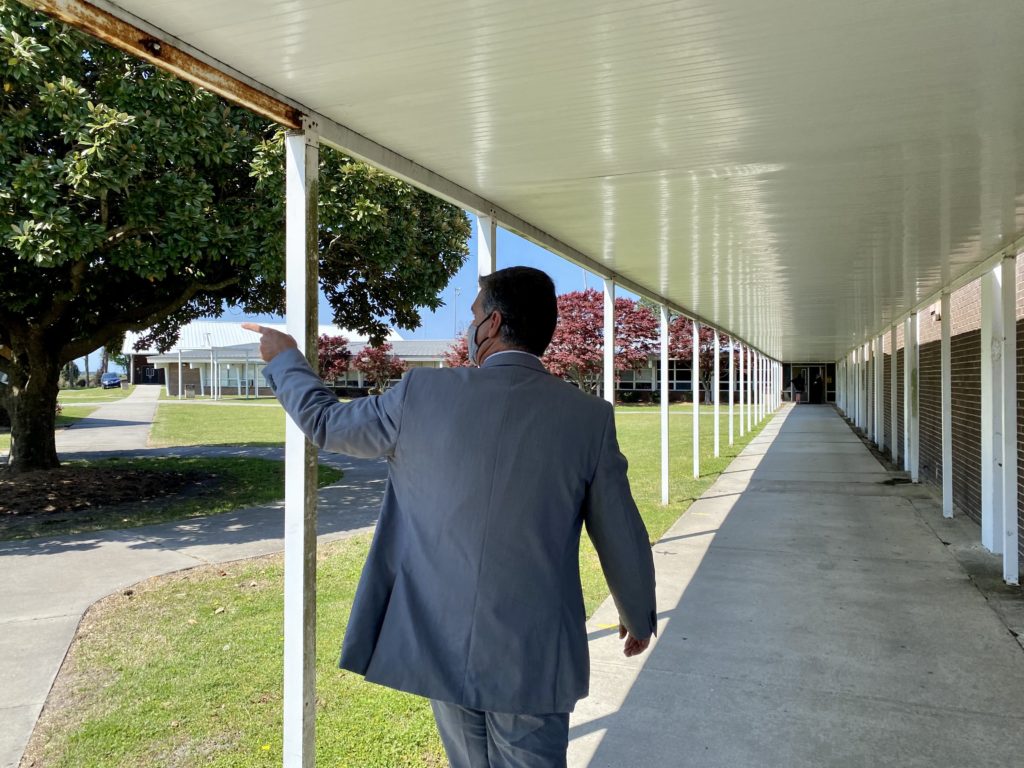
On Ocracoke, a pilot project with SpaceX
Starlink, engineered by Elon Musk’s SpaceX, has launched hundreds of low-orbit satellites that can beam high-speed internet down to receivers. The process is fairly simple: Users receive a package from Starlink with everything they need to install their equipment, including the Starlink dish, Wi-Fi router, power supply, cables, and a mounting tripod. Then, Starlink’s mobile app helps determine where to install the Starlink dish. After installation, the dish self-adjusts to best orient itself toward the satellites. The main requirement: A clear view of the sky, where the number of Starlink satellites continues to grow.
“When you open the box, there are three pictures drawn on the inside cover that say something like: lift it up, put it down, plug it in,” said Basnight, describing the installation process.
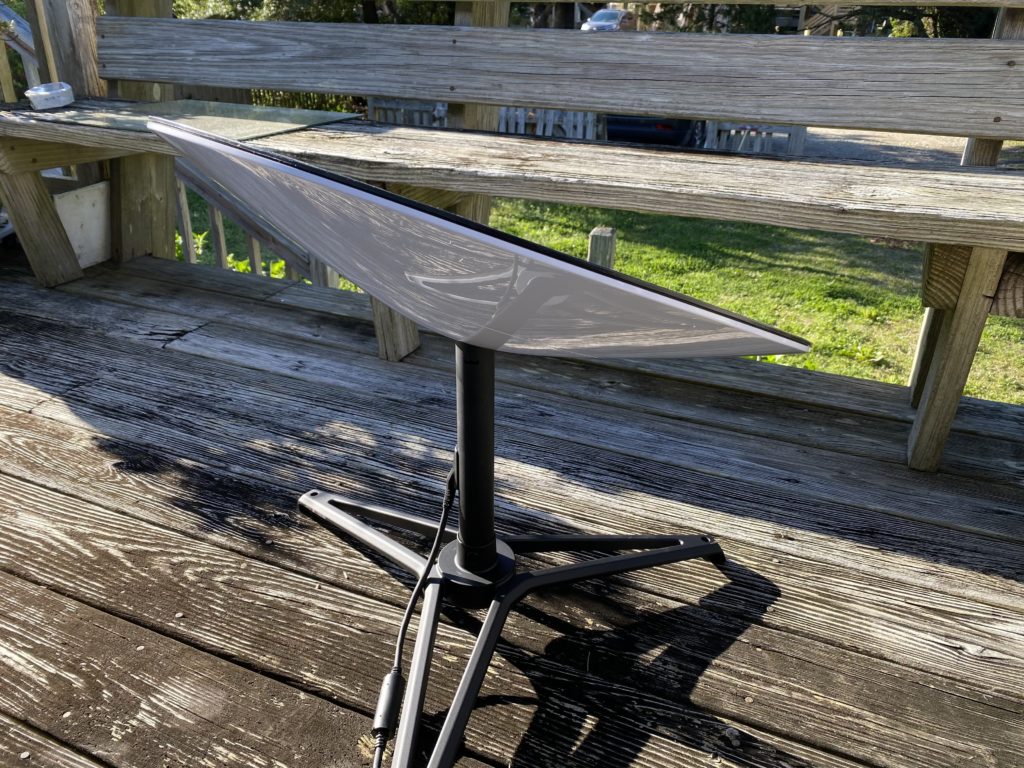
A Starlink dish on Ocracoke Island. Courtesy of Steve Basnight 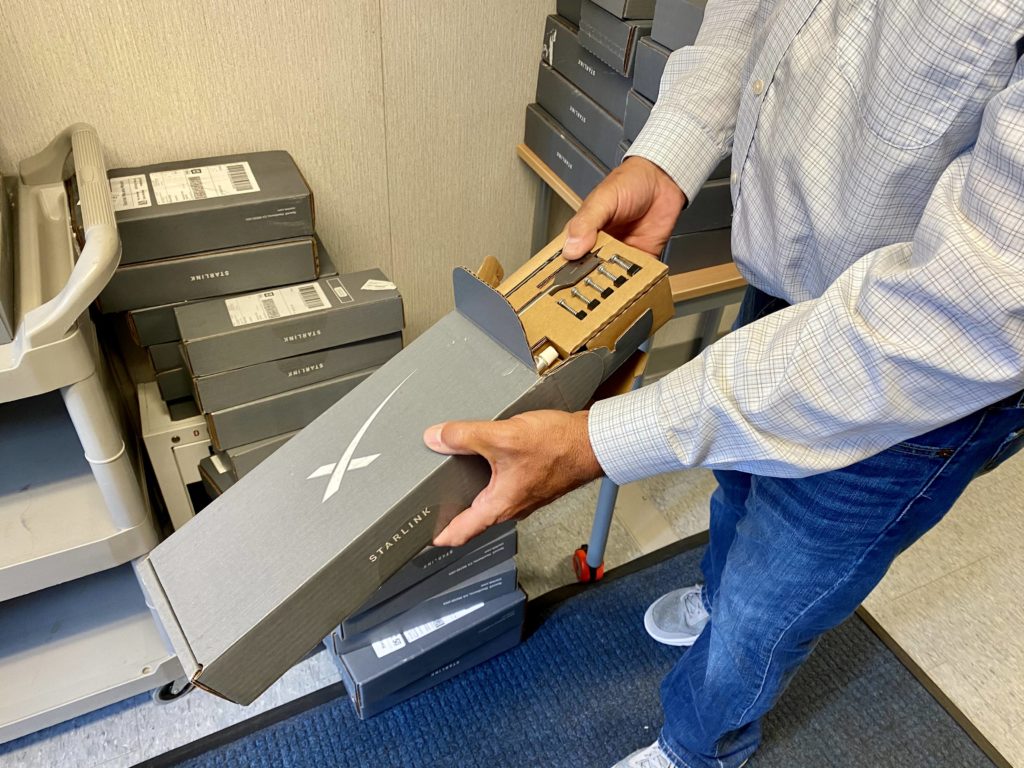
Basnight opens a package containing a Starlink dish mount. Analisa Sorrells/EducationNC
The Starlink pilot is led by the Broadband Infrastructure Office and the Friday Institute for Educational Innovation using about $264,000 in funding from the Coronavirus Aid, Relief, and Economic Security (CARES) Act. Of that, $88,000 is specifically being used for Ocracoke. The North Carolina Business Committee for Education is an additional partner in the project.
Through the pilot, both Swain County and Ocracoke are testing the feasibility of the satellite internet service for students who live in areas with no broadband or reliable cellular service. On Ocracoke Island, up to 47 Starlink units are being distributed to the homes of K-12 students and teachers. The pilot covers both the initial costs of the equipment, which is roughly $500, and a year of service, worth $99 per month.
Sabrina Lynn King-Bowen, the instructional technology facilitator for Hyde County Schools, installed her Starlink system on April 2. Over the following two weeks, she tested her internet speeds. Her average download speed, she said, was 141 megabits per second (Mbps).
For comparison, a major wireless internet provider on Ocracoke, CenturyLink, offers download speeds up to 60 Mbps, but the Ocracoke Observer reports that typical speeds are about 25 Mbps. Because CenturyLink offers Digital Subscriber Line (DSL) internet (internet that connects users through telephone lines) on the island, the farther a home is from their tower, the slower the internet is.
Since Starlink’s satellites are constantly orbiting in space, similar internet speeds are available regardless of a home’s exact location on the island. According to King-Bowen, the location of where the Starlink dish is installed outside is the most important factor.
“We rent, so we could not mount it to the roofline. So we mounted it to the porch — and if I slid it four inches this way, the top speed we’ve ever received is 260 (Mbps),” she said.
Even only a few weeks after implementation, the benefits of Starlink became clear to King-Bowen. Before Starlink, it could take her more than an hour to upload a video for students to Google Drive. Now, her upload speeds are roughly double what she had previously.
“It will also make a huge difference for the children … they want to be YouTubers and they want to create now — that’s what it’s all about,” she said. “And they don’t have the patience to wait … and it just opens the door to give everyone that opportunity,” she said.
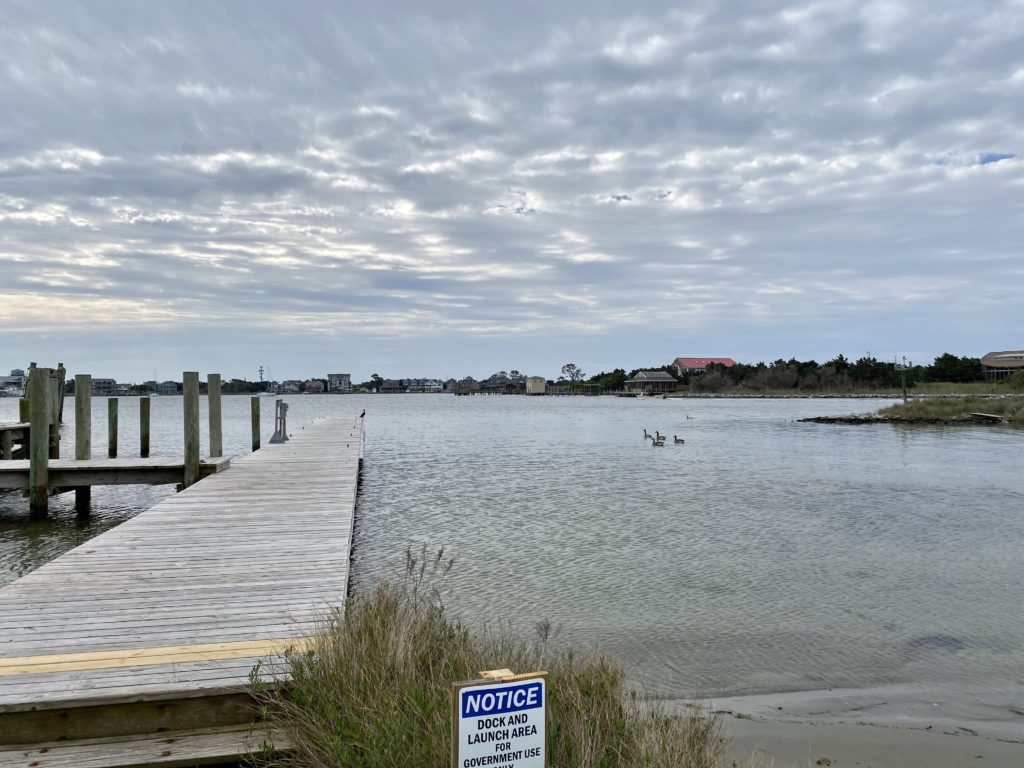
Heather O’Neal, a teacher assistant at Ocracoke School, works with students in the exceptional children (EC) program. She described her students’ frustration after getting kicked out of virtual classes due to to poor internet connections.
“If my kids get kicked off once or twice, they’re going to text me and say, ‘I can’t get on, I’ll see you tomorrow,'” said O’Neal. “You can say, ‘Let’s take a breather and try again,’ but you feel helpless because you’ve lost them, and there’s lost instructional time.”
Beyond better access to remote learning, consistent high-speed internet on Ocracoke could also provide improved access to services like telehealth. That’s especially important since Ocracoke’s health center is home to the island’s only doctor, and there are no pharmacies on the island.
For Basnight, this all comes back to ensuring an equitable education for the island’s students.
“You can call it whatever you want to. But when we can’t log on, go online, and talk to a kid without being knocked off … and everybody else can — that is not equity. That’s unfair,” said Basnight. “Our kids deserve everything that Charlotte and Wake and Greensboro have. And that’s what we’re pushing for. Northeastern North Carolina has been a desert for too long, and somebody needs to make a noise.”
On the mainland, leveraging unused TV channels
Allison Etheridge, principal of Mattamuskeet Elementary, lives off of Highway 264 near Engelhard in mainland Hyde County. Her husband, Randy Etheridge, is the chairman of the school board, and they have two children in elementary school. But there is no Wi-Fi service available at their house, so they rely on hot spots with data caps that often run out.
“All they have is two cell phones. And so when we were remote, one kid got dad’s cell phone, one kid got mom’s, and then the superintendent calls either the chairman of the board or a principal, and the kid gets kicked off,” said Basnight. “Now how frustrating is that?”
Unlike Ocracoke Island, which has one small geographical area where everyone lives, the residents of mainland Hyde County are spread over about 50 sparsely populated miles. Two cellular towers serve the entire mainland and, as Basnight says, “every phone call takes three phone calls.”
“Home computer access really doesn’t exist. So this is a hot spot, this is a computer, this is a telephone,” said Basnight, pointing to his iPhone.
Conversations about how to increase broadband access in the county have occurred for years, but Basnight said the issue of profits often stands in the way of progress. Telecommunications companies need to sell a certain number of internet subscriptions in an area to be sustainable. The region’s low wealth and low population density make that difficult.
But thanks to a pilot project between the school district and The Friday Institute for Educational Innovation, funded with $60,000 from the state Department of Public Instruction, a new solution is being tested.
The technology is called TV white space. When the first television broadcasts began in the United States during the 1920s, shows were transmitted using analog signals. But in the 1990s, new technology changed the way signals were transmitted through the air to digital signals. This switch to digital broadcasting freed up channels for other uses.
The Federal Communications Commission (FCC) takes those freed up channels and bundles them into packages. They are then made available for other uses, such as public safety communications or, in this case, wireless broadband. And Hyde County happens to have a lot of those available channels.
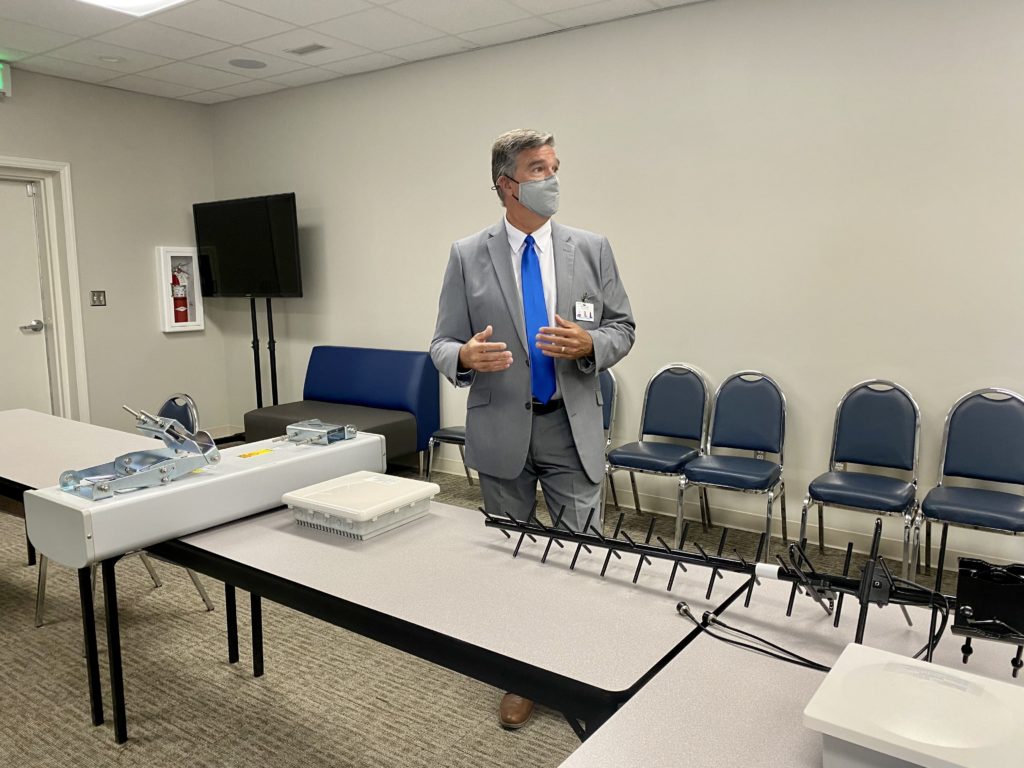
To make this work, a transmitting antenna is attached to a high-elevation location — in this case, a water tower in Engelhard. It provides roughly 60-degree coverage in the direction it faces. Wireless receivers at each customer’s house then receive a signal from that antenna. This is known as near-line-of-sight technology, which means a home doesn’t have to have a perfectly clear view of the antenna in order to receive a broadband signal.
In fact, TV white space frequencies have a special quality that makes them useful in North Carolina: They can penetrate pine needles, something other technologies can’t do. That’s because TV white space has a lower frequency that travels farther at lower speeds than, for example, 5G internet. That makes it a good solution for rural areas with low population density.
To provide this service to students and teachers on the mainland, the school district partnered with RiverStreet Networks, a local wireless internet service provider. The grant funding is covering the costs of both the TV white space equipment and a one-year subscription for families. Bill Shillito, business development manager with RiverStreet Networks, said the sustainability of the project is crucial for both the company and the community.
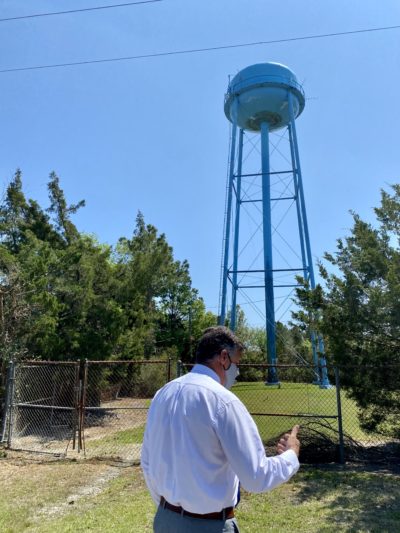
“It helps us build a customer base. It makes us more a part of the community. And it serves the students, which will help all of us down the road,” said Shillito. “We learned this technology that we can deploy in other areas, because we know it works and we know it’s scalable.”
As of April, there were six mainland residents connected to the TV white space technology on the Engelhard water tower. As the pilot continues to install additional equipment, it hopes to ultimately serve 30 households. After the initial grant funding ends, RiverStreet is looking for additional funds to continue subsidizing subscriptions and expanding service to additional households.
Nick Cuthrell is a physical education teacher at Mattamuskeet Elementary. He was one of the first people to receive internet through the TV white space pilot. After his equipment was installed in June 2020, Cuthrell could immediately tell the difference.
“I’m really excited for everybody else in the county to have the opportunity to get this internet,” he said.
Looking ahead
Both the Starlink pilot and the TV white space pilot are part of a study being conducted by the Friday Institute for Educational Innovation that is examining six different combinations of wireless broadband technologies across four North Carolina counties. The study will compare things like one-time costs, ongoing costs, data caps, and the speed of the service across all the projects. A preliminary report will be submitted to the Department of Public Instruction by the end of June and a public report should be released in July.
Basnight hopes that information from the two pilot projects in Hyde County can be shared with other districts across the state that are facing similar challenges. If these technologies can work in a place like Hyde County, he believes they can work anywhere.
And while he’s thankful that Hyde County Schools is the test case, Basnight also feels urgency to find long-term broadband solutions. In his words, it’s not just about technology — it’s about people.
“This is about kids. We don’t have time. This is not about profit,” said Basnight. “And the good news is, I see down the road where everybody is going to benefit from this. But the foundation was getting this for kids. And that’s why we’re standing here today.”
Behind the Story
Analisa Sorrells reported and wrote the piece. Robert Kinlaw filmed and produced the videos.

